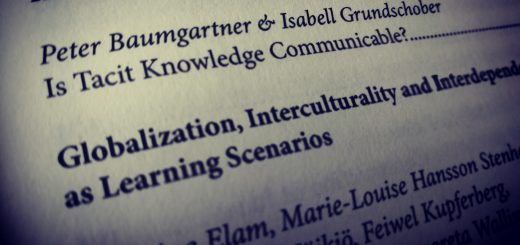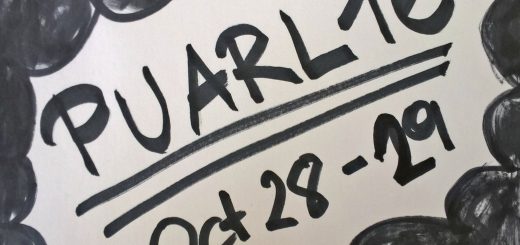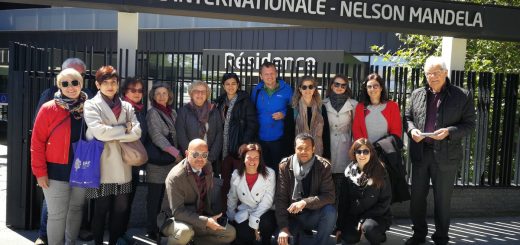How Polanyi Shapes the Validation of Informal Learning
Polanyi analyzed the nature of skilled performances and he differentiated between two kinds of awareness:
- Subsidiary awareness
- Focal awareness
During a performance or activity, the person is focussing attention on an object. While doing that, the person is subsidiary aware of using a certain tool.
Driving in a nail…
A popular example by Polanyi: Driving in a nail by strokes of a hammer. He writes: “I have a subsidiary awareness of the feeling in the palm of my hand which is merged into my focal awareness of my driving in the nail.” (Polanyi 2013, p.55)
He is talking about feeling the hammer in the palm of his hand. But we understand this feeling of the hammer in den palm of our hand just in a way is it gives us information about how to drive in the nail. Polanyi further states: “Subsidiary awareness and focal awareness are mutually exclusive.” (ibid, p. 56)
…or what about driving a car?
This means when concentrating on doing something, it is impossible to concentrate on how to use the tool at the same time. One just needs to remember to learn how to drive a car. First it is incredibly overwhelming to drive the car and at the same time to mind the traffic. But with time, the more experienced driver uses the car like a tool to move around, understanding it just in terms of getting safely to the desired destination. The driver doesn’t think about when to insert the correct gear. They get a “feeling” for the car and feel the right time when shift to the next gear. They are subsidiary aware of driving the car and all the details involved with the skill in order to focus attention on the street.
“Here again the particulars of a skill appear to be unspecifiable, but this time not in the sense of our being ignorant of them. For in this case we can ascertain the details of our performance quite well, and its unspecifiability consists in the fact that the performance is paralysed if we focus our attention on these details.” (Polanyi 2013, p. 56)
This means for our example of driving a car: If we were busy in identifying when it was best to shift to the next gear, we couldn’t concentrate on the traffic that well, because “…our attention can hold only one focus at a time” (ibid. p. 57) By the way, this might be another aspect speaking against multi-tasking.
Summary
The hammer or the car are tools in order to do something als. Skillful using these tools means not being aware of all the rules of how to use them. We are subsidiary aware of using the tool – meaning we are aware of them, but just in terms of how to get what we want and what we are concentrating on.
What does this mean for validation of informal learning?
When doing something, we can concentrate just on one thing. Concentrating on the other particulars means we cannot perform as well as we could. It would distort the picture of the actual skill.
On one hand it would be interesting how we use the tools in order to get good results in our performance but at the same time the performance is paralysed.
The learning outcome of any learning process, also informal learning processes, is some kind of performance. One can show what he or she is able to do. It includes all other skills the person has – it’s a holistic performance, which of course is relying on tacit knowing, which we are aware of in a subsidiary way.
How can this be connected with the 4 phases of validation?
Phase 1: Identification
What does this mean for the identification of learning outcomes? Often just the tip of an iceberg is visible. Many other skills are hidden, as they are just understood in regard of the object the person is attending to/the performance that is intended to be conducted. Looking at the particulars of the skill which is used in order to perform seems necessary, also if one risks that the performance itself is paralysed in this moment of analysing. Keyword: Destructive analysis.
Phase 2: Documentation
Finding evidence that the learning outcome is achieved. For one, this is of course some kind of prove, artifacts or physical demonstration that a person is capable of performing a specific task. If it is anyway a task, that is part of the tip of the iceberg, that might be easy. If the skills is mostly used in a subsidiary way, this might be tough. “Soft skills” are very often “hidden” in other performances. Their identification and also their documentation is more difficult.
Phase 3: Assessment
Assessment needs to consider if the skill or competence to be assessed is usually subsidiary used or focally used. An assessment setting needs to be developed which allows to assess also skills which are subsidiary used. This is also in close connection with the documentation of these skills.
Further research
I approach the topic of how to validate tacit knowledge in my paper for the PUARL conference, “A pattern language for tacit knowledge”. More HERE.



